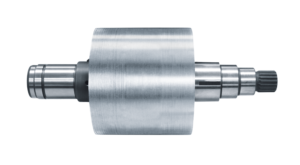For many production planners, IoT in production is still a visionary principle: machines form a fully integrated system that production planners monitor, control and evaluate from a central location. This approach is no longer a vision of the future as is demonstrated by an impressive production solution at MAT Machining Europe GmbH, headquartered in Immenhausen. The automotive supplier manufactures complex differential gear housings on fully automated EMAG production lines – including extensive data monitoring and evaluation of machine data.
The aim is to significantly increase line output and significantly improve process reliability. The overall system is already firmly implemented in the workflow.
The production process at MAT Machining Europe GmbH for the differential gear housing is impressive: The company has a total of five large production lines, each with seven EMAG machines, which are linked via TrackMotion from EMAG.
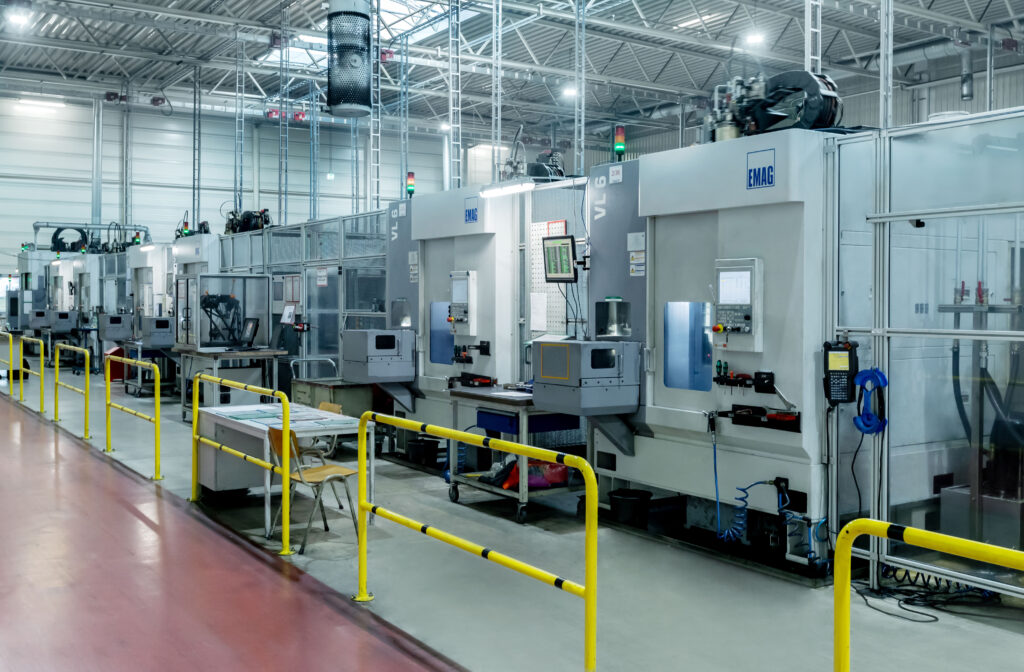
A so-called TransLift unit travels “through” the machines on a rail system and transports the component from one pick-up station to the next. Various preliminary processes are carried out on the housings: turning of the first side, including machining of fits and bores, turning of the second side and the outer contour, and – in the final set-up – internal machining of the spherical shape and fitting bores. Finally, washing, measuring and marking follow. In total, almost 2 million differential gear housings are produced at MAT per year at the Immenhausen location alone.
Win-Win-Situation
Why has the company now decided to digitize this highly automated solution and make innovative use of the production data it generates? “We generally rely on highly efficient state-of-the-art production solutions, which we are constantly developing further. Digitization is naturally an important topic here,” says Axel Dräger, Head of Engineering at MAT Machining Europe GmbH. “At the same time, we knew that EMAG has made great efforts around IoT in recent years and is quite interested in testing new IoT solutions with users and getting qualified feedback. So for both companies, the whole thing is a win-win situation.”
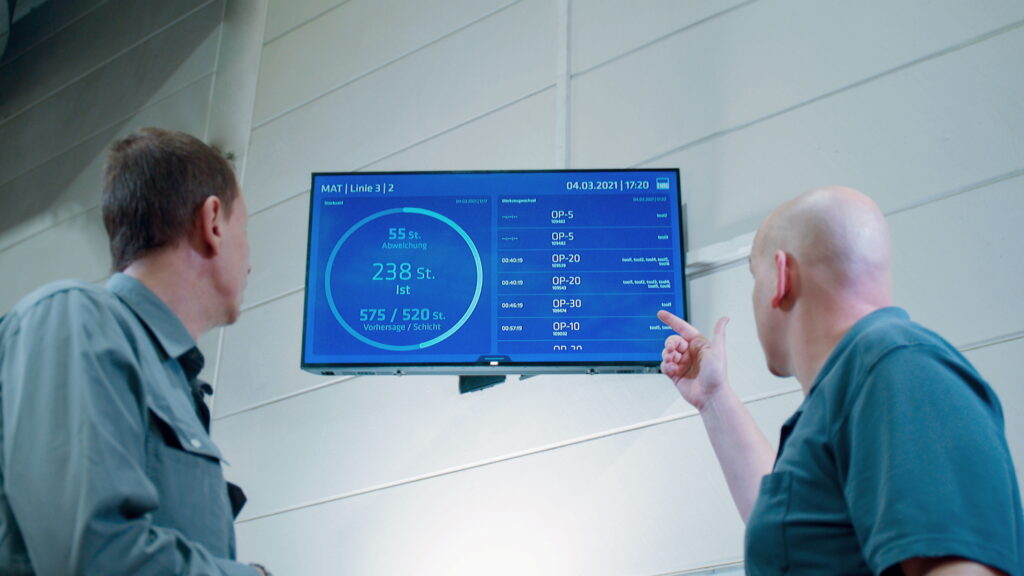
Due to this partnership, the project initially started with workshops in spring 2019: MAT managers introduced the IoT experts from EMAG and the partner companies EXXETA, intuity and anacision to the production processes surrounding the differential gear housing. Subsequently, they defined conceivable use cases and developed technological solutions, which included the EDNA Cortex software and various prototypes of the apps used today (the system here is similar to the basic principle of smartphone operating systems). At the same time, the EDNA Core – an industrial PC – as well as the acceleration sensor, EDNA Neuron 3DG, were installed in each machine. It is important that EMAG’s solution has a completely modular software and hardware architecture that can be easily implemented in the users’ IT infrastructures and most EMAG machines (even older types). Connecting additional sensor technology is also no problem.
Output increase of 11% – process reliability improved
The handling of the data by the customers is again done with the help of the EDNA Lifeline Dashboard, on which the mentioned apps for different applications are installed – the customer can decide what exactly can be seen and in which arrangement. In the case of MAT, this includes the “Part Quantity Forecast” for a forecast of the output quantities per shift, the “Cycle Time Monitor” with information on the current cycle times of machines or lines, the “Smart Tool Change” with information on the remaining tool life, the “OEE Monitor” for a detailed breakdown of the current OEE and the “Health Check” on the machine condition. “Overall, the amount of data is actually so diverse that we have only analyzed a portion so far,” explains Dräger. “Nevertheless, the initial results are impressive. For example, we have already eliminated various ‘time wasters’ and are well on the way to an increase in output of eleven percent. That is, of course, a tremendous value.” The specialists at MAT also benefit from ongoing sensory monitoring: the system determines a precise “health value” of the drive as well as the spindle and indicates any wear at an early stage – a major plus for the process reliability of the production lines. The same applies to the precise prediction of the right time for tool changes.

In addition, the EDNA system is firmly implemented in MAT’s workflow: On the one hand, production planners or shift supervisors use the dashboards to determine the quality of parts that are currently being produced. On the other hand, operators can plan their workflow better with the help of the software because they are back at the machine on time after a break or always have the “right” tools ready when a tool change is due.
MAT is setting the course for a digital future
“Many are talking about it, we are building the digital factory right now!” “That sums up one of the main topics that drives us. While everyone is talking about digitalization, MAT is in the middle of implementing it and making sure that machines communicate with each other. Only through consistent automation and autonomization of production processes, can manufacturing costs in the automotive sector be kept in line with the market,” explains the responsible Managing Director of the MAT Transmission Division and CEO of MAT Europe, Ingo Bitzer.
Focus on further use cases
Overall, both partners by no means consider the entire project to be completed – on the contrary: The digitization of MAT production is continuing apace, confirms Dr. Andreas Kühne, Lead Data Scientist at the company anacision, in which EMAG holds a stake: “Our common goal is to equip further lines with this IoT solution. We also want to implement new uses, such as tool breakage detection. Because of this, we continue to exchange ideas closely.” In the end, the question remains as to the cost of such a project – and here the IoT specialists at EMAG came up with a surprise: The hardware retrofit of large production lines – for example, the integration of IPCs including cabling – is completed within a few days. In the case of a single machine, only one day is needed. This is possible because all the preliminary work is done at EMAG, where the system is configured precisely for the desired solution and prepared for connection to various machine controls. After implementation in the machines on site, the user benefits very quickly from the desired functionalities and process improvements.

“The EDNA Industry 4.0 solution consisting of the IoT core, software and dashboard has already been available to all customers for some time, is convincing more and more users, and is constantly being further developed,” Kühne summarizes the status quo at the southern German machine manufacturer. “According to initial feedback, OEE increases significantly with EDNA and we even estimate that a ‘return on investment’ is possible after about one year, when the data obtained is evaluated and used to derive actions.” Incidentally, users benefit from a comprehensive, open and future-proof IoT ecosystem. With EDNA, EMAG is laying the foundation for the intelligent production of the future.

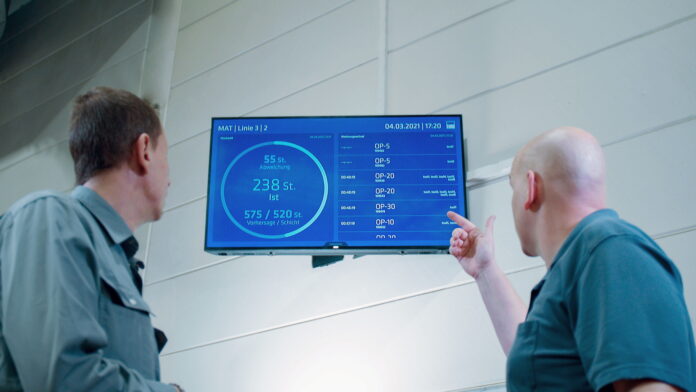

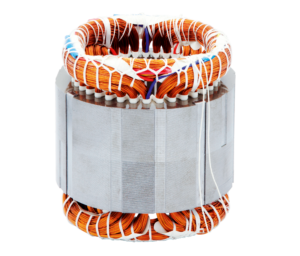 The line dedicated to the manufacturing of motors from 4 to 40 kW includes, in fact, winding, impregnation, rotor and assembly and therefore can offer a complete and efficient “turnkey” solution for two-wheelers and three-wheelers, but also microcars, vehicles “for fun” and e-marine.
The line dedicated to the manufacturing of motors from 4 to 40 kW includes, in fact, winding, impregnation, rotor and assembly and therefore can offer a complete and efficient “turnkey” solution for two-wheelers and three-wheelers, but also microcars, vehicles “for fun” and e-marine.